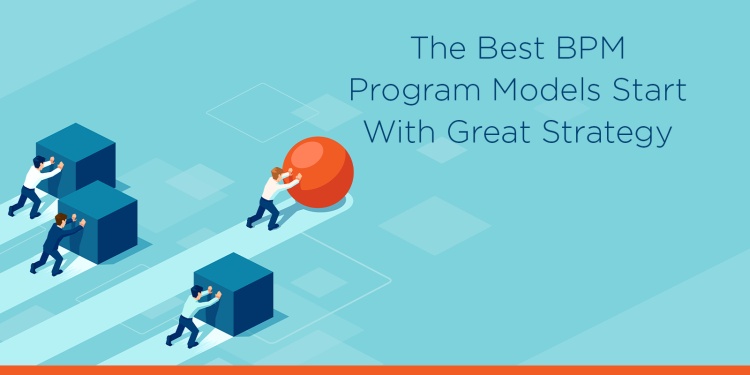
One of the questions that we get repeatedly is: What is the best practice model for BPM programs?
Unfortunately, the response is: Well, it depends.
There are almost as many models as there are business process management (BPM) programs. One of the reasons for this is the multitude of factors that shape an organization’s BPM program. This includes things like the primary purpose of the program, where it reports into, the organization’s structural model, support from leadership, and even corporate culture. However, there are still some core similarities in programs.
So, in October we sent out a survey to dig into BPM programs to identify their commonalities and trends. The survey focused on BPM programs’ models, measures, resources, and practices across the Seven Tenets of Process Management.
What did we find out?
- Strategic purpose is still the name of the game. Supporting the strategic goals of the organization is the number one purpose of most BPM programs. This is followed closely by creating a culture of continuous improvement and documenting processes to understand the how work gets done (i.e., discovery work).
- Purpose and organizational size influence the program’s model. As the organization’s size increases, so does its tendency to use a federated model (centralized management with decentralized representatives in the business). Similarly, programs’ whose directive is to support the strategic goals of the organization tend to have federated models.
- Governance remains a weak point. Organizations have made headway in process governance. But their efforts are tactical, relying predominantly on process owners and improvement specialists. Only about a third of organizations incorporate strategic governance in the form of sponsors and steering committees.
- Culture shifts are hard. Though establishing a culture of continuous improvement is key for many programs, only 38 percent of organizations have a culture of continuous improvement. Over half of the programs’ improvement opportunities are ad hoc.
- Managing improvements is often ad hoc. Year-on-year, organizations struggle with identifying, selecting, and prioritizing improvement opportunities. Most improvement portfolios do not extend beyond business unit borders and just over a third use selection criteria for opportunity assessments.
- Measurement is problematic. Measurement is another evergreen challenge for BPM programs. Almost half of the programs identify measures as part of their process documentation. But these measures are ad hoc and don’t include a mix of leading and lagging indicators. Furthermore, organizations are not using benchmarks or ongoing monitoring to manage process performance.
Not all the findings were negative.
BPM programs have a defined strategic purpose, whether that’s supporting the strategy or providing a foundation for improvement through documentation. This helps programs have a clear value proposition and structure for their annual roadmap.
Additionally, BPM teams use an array of methodologies (e.g., Lean and Value Stream Mapping) and technologies (e.g., workflow management, automation, and content repositories) which ensures they apply the “right” solution to their improvement efforts. For example, half of the respondents are actively using content repositories to ensure transparency around their processes and so people can find things like business rules, best practices, or standard operating procedures as they execute their processes.
Finally, BPM programs know their people skills are the key to success. Consequently, programs are actively cultivating a collaborative partnership with the business in their work through robust communications, engagement, and training.
Want more information on this topic?
- Check out the full survey report.
- Join us on December 15th, at 11:00 a.m. CDT for our Practices that Drive BPM Program Success webinar, where we will discuss the results of the survey and practices which help driver program performance.
For more process and performance management research and insights, follow me on twitter at @hlykehogland or connect with me on LinkedIn.